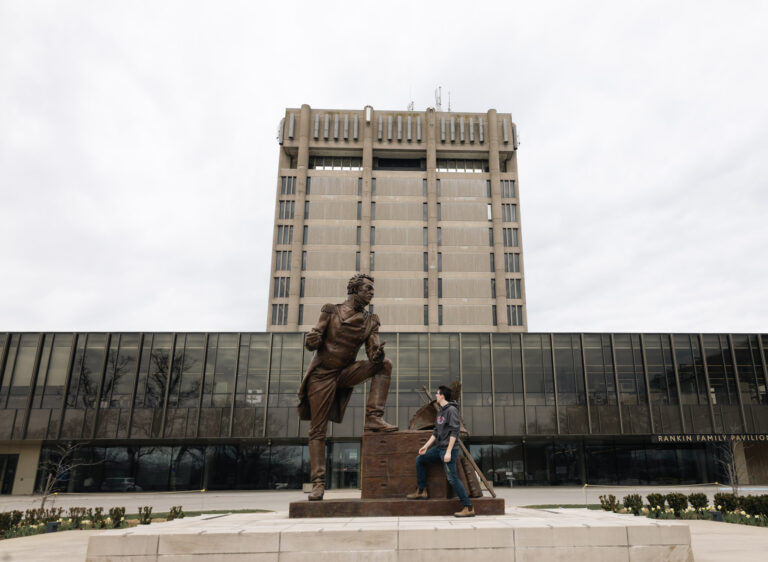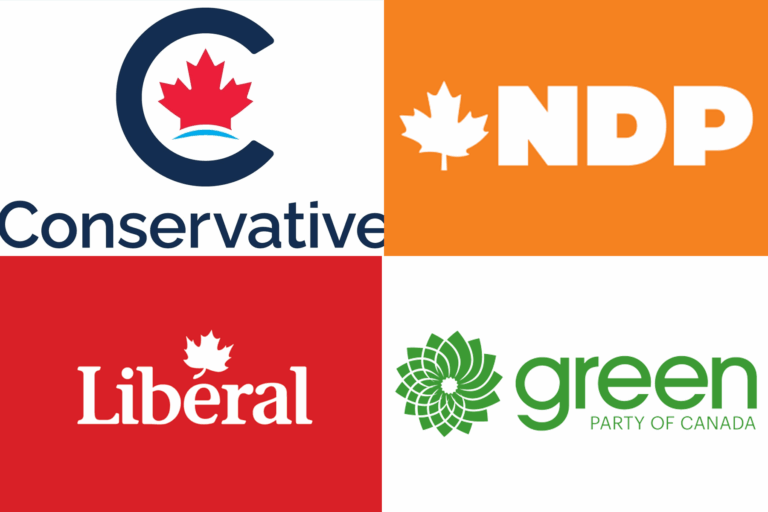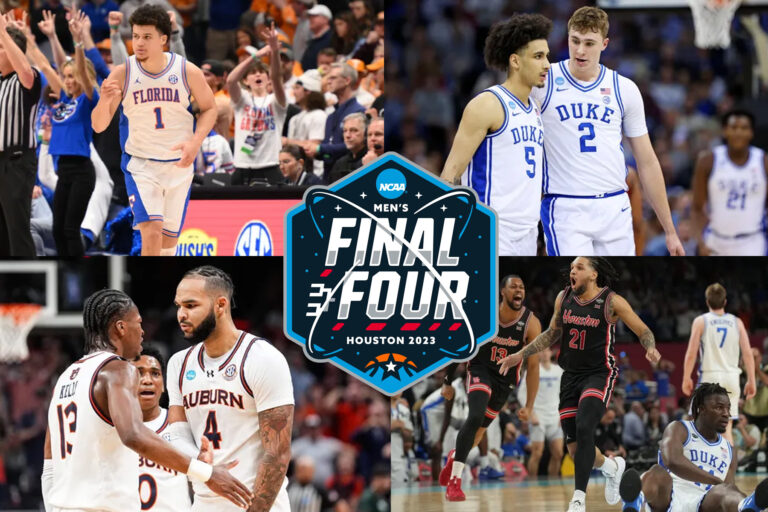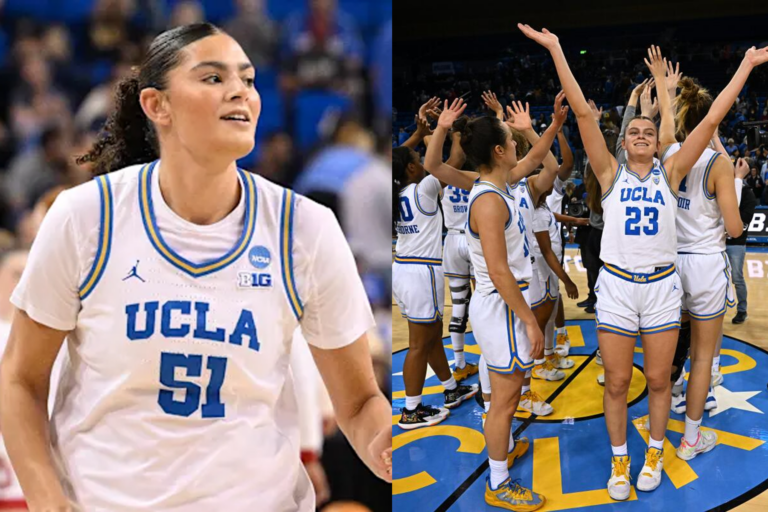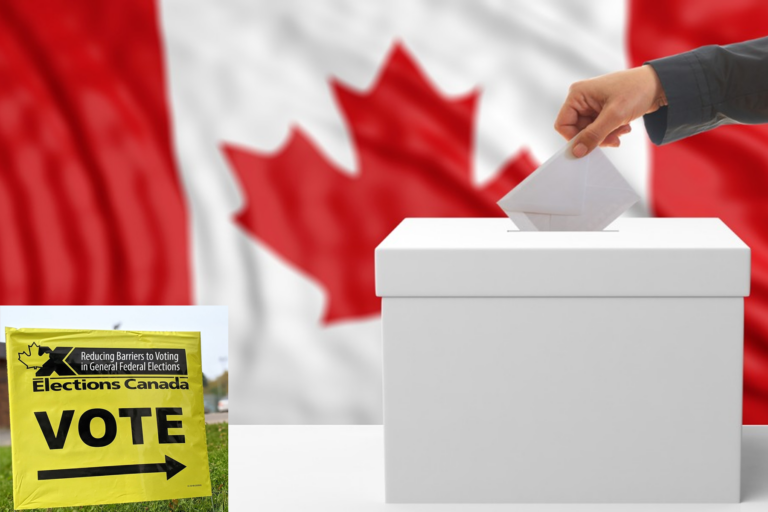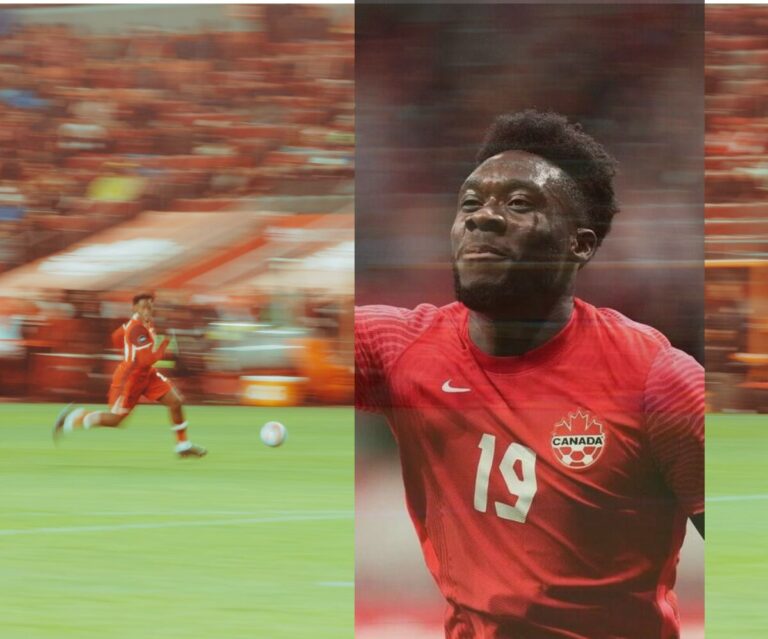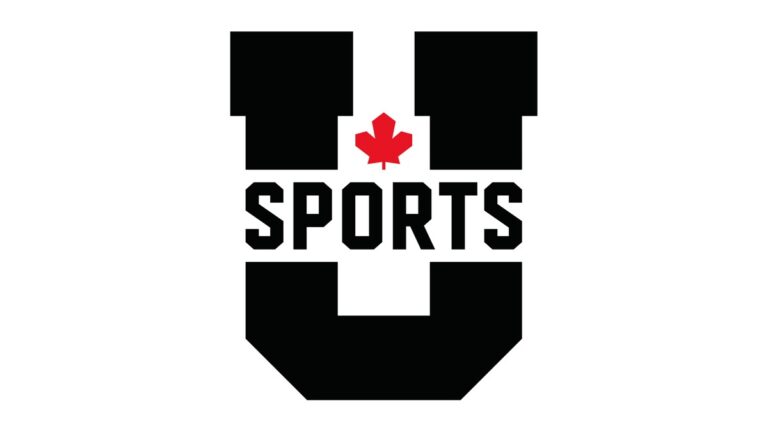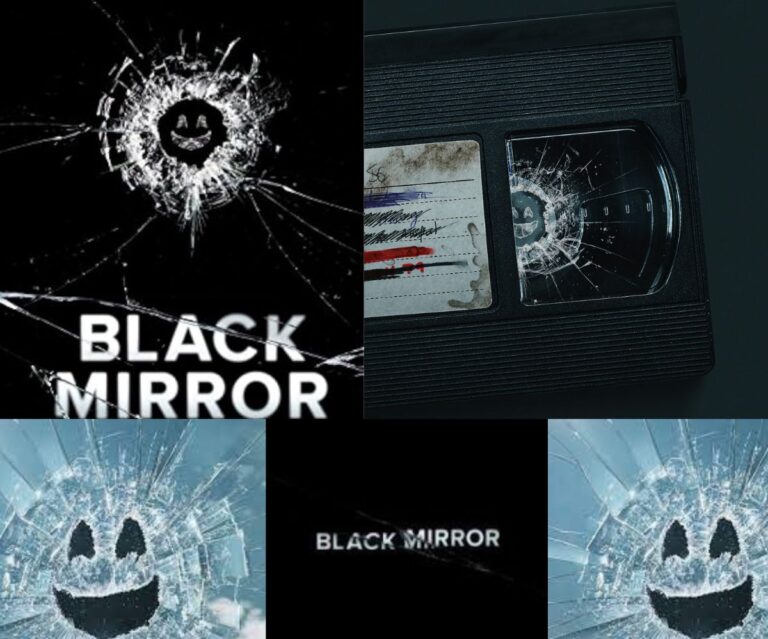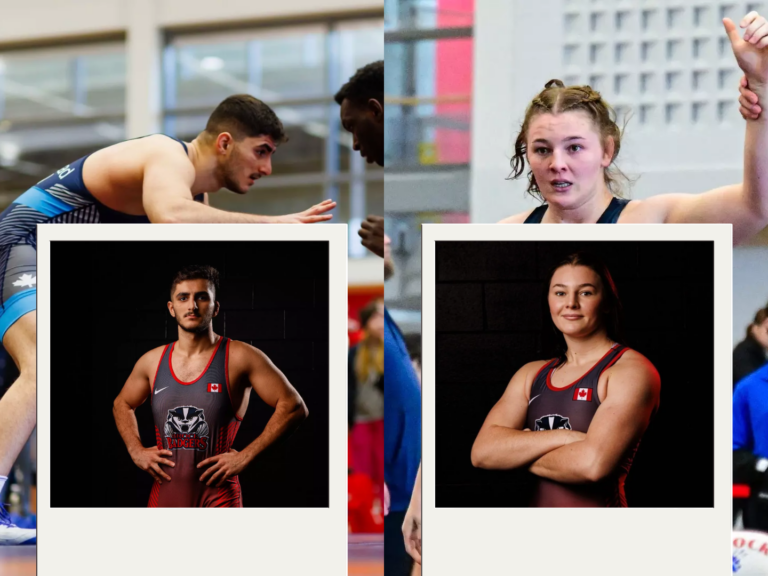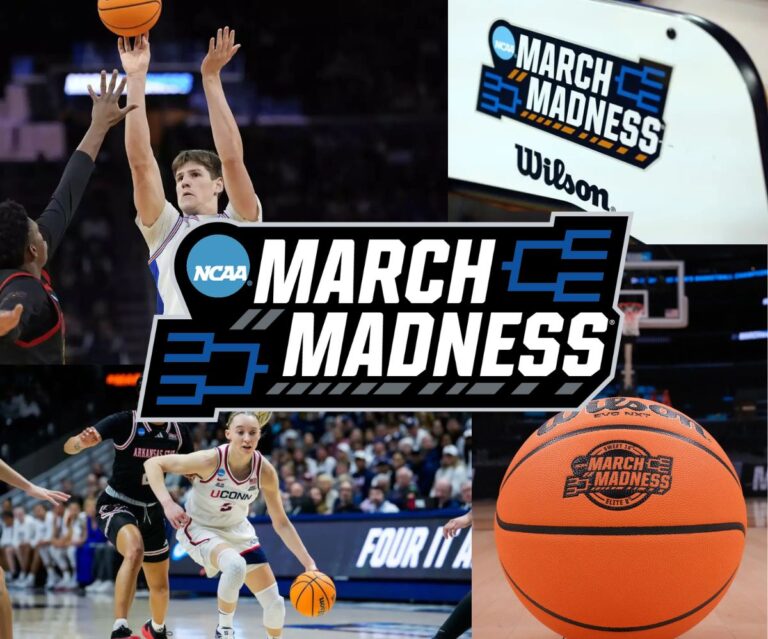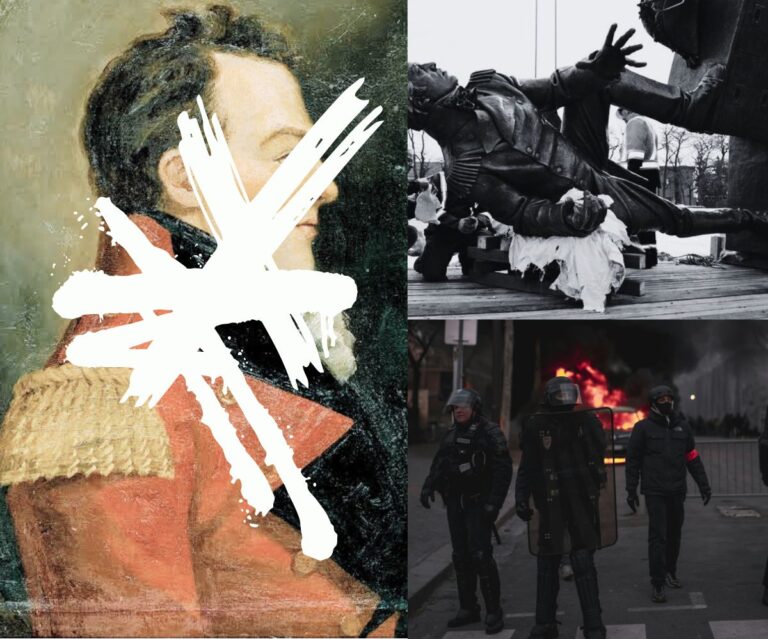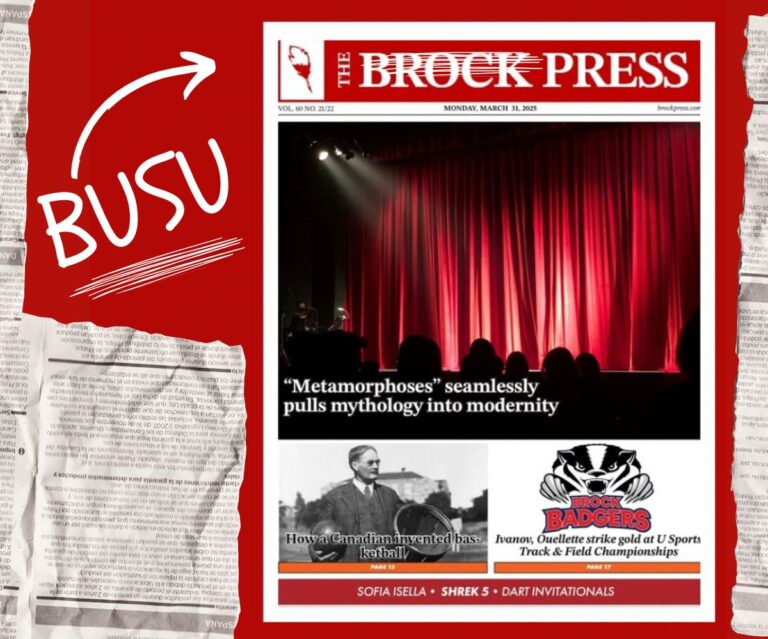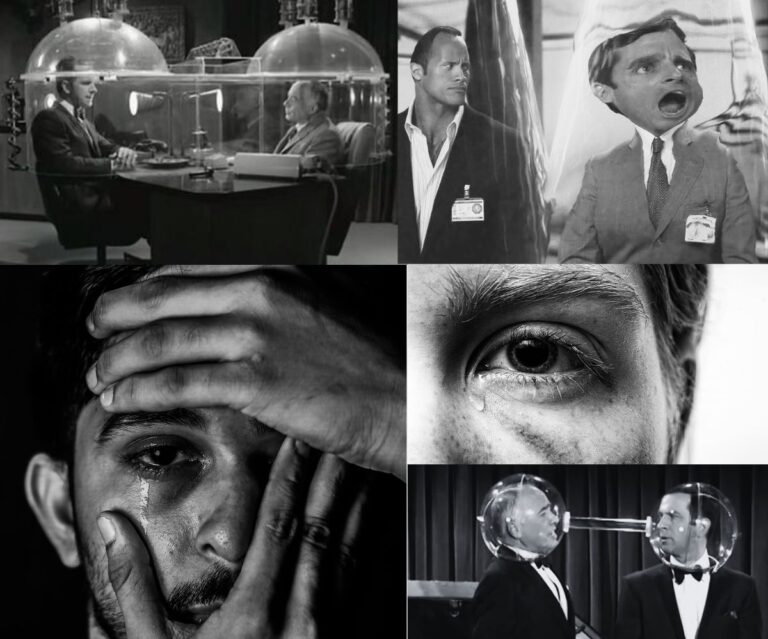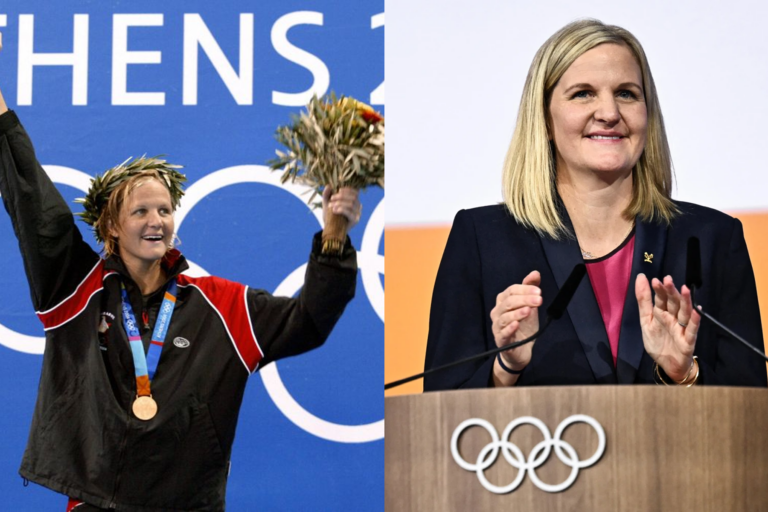Even if you haven’t already heard of Black Mirror, you’ve almost certainly been living through it. Black Mirror, Netflix’s hit anthology series created by Charlie Brooker, explores the dangers of technology through an array of thought-provoking episodes, asking a series of “What if?” questions that leave you questioning everything you know about humanity and our overreliance on technology.
It’s hauntingly prescient: we find ourselves closer than ever to living through a real-life episode of the show as the use of artificial intelligence continues to spiral out of control, proving the series’ unnerving parallels to our own reality.
With Black Mirror’s seventh season rapidly approaching on April 10, there’s never been a better time to look through the show’s catalogue of episodes to see where it made us think, where it fell flat and where it might just define our future.
Here are all 28 episodes of Black Mirror, ranked from worst to best.
(*Heavy spoiler warning ahead for the entire show thus far.*)
28) “Mazey Day” — Season 6, Episode 4
When Black Mirror flops, it flops hard, and no episode demonstrates that better than “Mazey Day.” What starts as a terribly boring review of how the paparazzi negatively impacts the lives of celebrities — you know, a point that pretty much everyone already agrees with — gets even worse when the main character inexplicably transforms into a werewolf midway through the episode. This awful excuse for a plot twist came out of nowhere and left me intensely confused and frustrated by the end of the episode. After watching it, I had to wonder whether Brooker actually thought he had something insightful here, or if he wrote this episode as a joke because he lost some sort of bet.
“Mazey Day” isn’t just the worst episode of Black Mirror — with zero redeeming qualities, it’s a strong contender for the worst episode of television I’ve ever seen, and I advise you to avoid it at all costs.
27) “Metalhead” — Season 4, Episode 5
The only reason “Metalhead” isn’t in last place is because Black Mirror somehow managed to top it (bottom it?) with “Mazey Day,” but trust me, that isn’t saying much.
“Metalhead” is a wasted slog of an episode where we watch a lethal robotic dog chase a woman around and… yeah, that’s pretty much all that happens. While many Black Mirror episodes ask thought-provoking questions about technology and what it might become, “Metalhead” pretty much just asks what would happen if dogs were killer robots, and the outcome is about as predictable as you’d expect. There’s not much else to say here.
Oh, and the entire episode is filmed in black-and-white, because having it with colour would apparently risk making it too entertaining.
26) “Rachel, Jack and Ashley Too” — Season 5, Episode 3
This episode is quite a bizarre watch because it all feels like some sort of weird joke. Its bright and bubbly themes make it feel like it shouldn’t be taking itself seriously, yet with a story about a celebrity being controlled by her manager, it does take itself seriously, and it’s never quite clear what this episode is trying to be.
It also stars Miley Cyrus in one of the show’s biggest celebrity cameos, but it feels oddly out of place with the rest of the show. Other episodes explore silly and funny moments, but they manage to do so in a way that still feels distinctly Black Mirror.
It’s not impossible for Black Mirror episodes to be quirky and silly; it’s certainly been done elsewhere. “Rachel, Jack and Ashley Too,” unfortunately, is not an episode that is successful at it.
25) “Crocodile” — Season 4, Episode 3
“Crocodile” has the bare foundation of a decent Black Mirror episode, but its execution falls flat in just about every way. The episode explores the idea of being able to physically see other people’s memories, but its plot just turns into a string of murders that makes it impossible to empathize with the protagonist and ultimately feels like wasted potential of a good Black Mirror concept. This is a rare instance of the show creating a good idea but squandering its exploration of the core concept, and it quickly becomes an episode that’s very hard to recommend.
Plus, the ending simply feels needlessly cruel with a flubbed joke that’s not in line with the dark themes of the rest of the episode. While the rest of the episode was already far from perfect, the ending solidifies “Crocodile” as a truly bad episode of Black Mirror.
24) “Bandersnatch” — special interactive episode
Originally planned as part of Black Mirror’s fifth season, “Bandersnatch” was spun off into its own entity, and it’s not hard to see why. The episode is an interactive Netflix special, which means it’s up to the viewer to make decisions using their TV remote to guide the characters’ destinies and ultimately shape the plotline. It’s an incredibly cool concept that feels right in line with Black Mirror’s core themes, and its creators should be proud of the difficult concept they chose to tackle.
Unfortunately, that’s about all that “Bandersnatch” has going for it.
While the interactive gimmick is fun, it’s weighed down by an uninteresting story, unsatisfying endings and an ungodly amount of repetition. It’s the sort of thing that’s worth trying out if you’re interested in a choose-your-own-adventure-style episode, but after you’re finished going through its multiple endings once, it’s hard to find a reason to return.
23) “Loch Henry” — Season 6, Episode 2
“Loch Henry” is one of those occasional Black Mirror episodes that doesn’t go all-in on a futuristic technological theme, instead relying on a concept that already exists today as an overarching theme: in this case, documentary filmmaking.
The episode explores the effects that true crime documentaries have on their stories’ real victims, and while there are occasionally interesting moments, it all unfortunately ends up quite boring. The episode isn’t helped by its final plot twist, which unintentionally ends up being quite humorous instead of horrifying when some old footage is rediscovered — which does a bit of a disservice to the entire purpose of the episode, which is meant to stand against the sensationalizing of victims’ stories.
“Loch Henry” isn’t a grossly offensive episode of Black Mirror like some examples earlier on this list, but it’s only barely possible to describe it as a competent episode, if you can even call it that.
22) “Men Against Fire” — Season 3, Episode 5
“Men Against Fire” shows a neat concept with some interesting ideas, but it’s far from the show’s best.
The episode shows soldiers at war attempting to go out and defeat “roaches”: supposedly evil, disgusting monsters who terrorize villages and must be eradicated. The plot twist eventually reveals that the “roaches” are in fact human beings of an unnamed ethnic group that the government is attempting to eliminate, and the soldiers only visually see them as monsters because of chips inserted in their brains. It’s an interesting idea, but it doesn’t go much further than that.
The twist occurs somewhat late into the episode for my tastes, meaning so much of the episode is just a hunt for “roaches” before anything of interest happens. It’s an interesting allegory reminiscent of the Nazi party’s genocidal actions in World War II, but when so much of the episode consists of soldiers shooting up old farmhouses and abandoned buildings, it’s hard to consider it one of the most interesting.
There’s nothing inherently wrong with “Men Against Fire,” it’s just not an episode that I could see myself returning to.
21) “Demon 79” — Season 6, Episode 5
“Demon 79” is actually one of the series’ more interesting episodes, but it loses points because it’s quite difficult to actually consider it a part of Black Mirror. Instead, the episode is framed as part of a new subseries entitled “Red Mirror,” which supposedly explores supernatural themes rather than technological ones.
While the plot — which consists of a woman begrudgingly helping a demon save the world by committing a series of murders — is quite interesting, it feels completely out of place with the rest of the show’s lineup. It doesn’t help that this episode comes from the same season as “Mazey Day,” which suffers a similar problem with its werewolf theme even if that one isn’t branded an episode of “Red Mirror.”
Black Mirror is at its best when it explores the terrors of technology, and “Demon 79” unfortunately strayed from that path. While it’s worth a watch if you enjoy supernatural stories, it’s fair to hope that it won’t define the future of Black Mirror.
20) “Fifteen Million Merits” — Season 1, Episode 2
As one of the show’s earliest episodes, “Fifteen Million Merits” has some kinks to iron out, but it still does an acceptable job overall. The episode details a world composed almost entirely of screens, where every wall of every building is lit up with some sort of advertisement.
It’s the earliest episode to explore a dystopian future, and while you can start to see some of Black Mirror’s intelligence at times, I found it lacked the nuance exemplified by some of the show’s later episodes. This episode was also created before Black Mirror would eventually move to Netflix with its third season and see a corresponding jump in its budget, meaning this ambitious episode feels a bit cheap in places, such as the somewhat ugly Xbox 360-like avatars meant to digitally represent different people. The episode also explores too many themes, like advertisements, digital currency and game shows, which makes it impossible for “Fifteen Million Merits” to truly flesh out any single one of its many themes.
For a very early episode of the show, it’s not bad by any means, but it’s certainly been outdone many times by the show’s future seasons as it grew in budget and concept.
19) “Striking Vipers” — Season 5, Episode 1
“Striking Vipers” is probably the first episode on this list that I find more enjoyable than not. The episode goes into the theme of virtual-reality gaming, with two old friends reconnecting over a fighting game called Striking Vipers X. However, things quickly go awry when the two friends, both of whom are men in the real world, pick their characters in the video game. One chooses to be a man and the other a woman, which progresses into them having regular sex with each other through virtual reality, since the game allows their physical bodies to feel the full sensations that it emulates. This starts driving one of the players away from his wife as he is wracked with guilt and confusion.
It’s definitely an interesting watch, and a competent episode of Black Mirror that mixes themes of technology with that of humanity. Unfortunately, because it doesn’t reach the heights of other episodes of the series, it also just doesn’t stand out in my mind, leading to its placement on this list.
18) “The Entire History of You” — Season 1, Episode 3
“The Entire History of You” is the first episode of Black Mirror to home in on a specific technological theme in a futuristic setting. It’s also the first episode to focus on the idea of a computer chip that connects with your brain, a concept that would repeatedly (sometimes to a frustrating degree) get reused in future episodes.
This episode, however, uses the brain chip to examine the relationships between people and how technology can come between us. In the episode, a man begins to fear his wife is having an affair, so he obsessively uses his brain chip to recall his own memories in search of clues to support his theory. His obsession with this, and his distrust of his wife, eventually begins to drive them apart, and we see the first example of Black Mirror using futuristic technology in a realistic way to create division between people. The concept is quite simple, but that’s part of the beauty of it. Not every episode needs to be elaborate to be successful.
The reason this episode ranks fairly low on this list is because the brain chip eventually reveals that the man’s wife was indeed having an affair, causing a confrontation between them. Unfortunately, this twist did something that works against the general theme of Black Mirror: instead of painting the technology as something harmful, this twist inadvertently validates the technology it’s trying to paint as evil, which I feel works against the episode in the long run. However, “The Entire History of You” still does so many things well that it’s impossible to rank it any lower on my list.
17) “Nosedive” — Season 3, Episode 1
Despite not being higher on my list, “Nosedive” can probably be described as a quintessential episode of Black Mirror thanks to its dark technological theme and its corresponding effect on society. “Nosedive” explores a future in which everyone is linked to a digital social score out of five, where people influence each other’s scores by ranking the social interactions they have with them. This social score then affects every aspect of a person’s life, including their socioeconomic status.
The episode reflects on the nature of social media and the way we perceive each other through “likes” and follower counts. It’s quite an interesting episode, it’s just not terribly exciting. It’s one of those episodes that feel like they deserve to be ranked higher, but frankly, there are so many other episodes of Black Mirror that are much more of a thrill.
16) “The Waldo Moment” — Season 2, Episode 3
Upon my initial watch of “The Waldo Moment,” I probably wouldn’t have ranked it this high on the list, but it’s grown on me due to the parallels it shares with the real world since the episode’s release.
The episode follows a computer-animated bear named Waldo on a comedy show who pranks politicians. Waldo is voiced by an unhappy comedian, who is eventually surprised when television executives push for Waldo to run in an upcoming election. It explores the ideas of celebrities and popular figures running for political positions when they have no place in politics, and the effects that can occur when they use their power to get into office.
Sound familiar?
Indeed, “The Waldo Moment,” which originally aired in 2013, has been credited as “predicting” the rise of U.S. President Donald Trump, whose story mirrors that of Waldo’s rise to the top. It is for this reason that “The Waldo Moment” ranks higher on my list than it would have in the past: if an episode of Black Mirror is able to so closely reflect the future of reality, then it’s successful at what it set out to do.
It’s just a shame that some use these cautionary tales as instruction manuals rather than what they actually are: warnings.
15) “Hang the DJ” — Season 4, Episode 4
One thing I love about Black Mirror is how many genres of film it takes on through its varying episodes, and as a rom-com-style episode, “Hang the DJ” is no exception.
The episode follows a world where people use a machine that functions as an intensely thorough dating app, setting people up with romantic encounters that last for a predetermined amount of time before they break up and are matched with someone new, all in order for the machine to analyze their behaviour and eventually match them up with the “perfect person.” The episode can be seen as a critique on the culture of dating apps, and as a person who doesn’t like dating apps myself, the theme resonated with me.
While I didn’t find the episode particularly gripping all the way through, it succeeds at what it sets out to do, telling a story about technology’s involvement in the world of matchmaking and the way it might actually be leading us astray.
14) “Smithereens” — Season 5, Episode 2
“Smithereens” is, in many ways, a story about closure. In line with its theme, it doesn’t reveal many of its protagonist’s motivations until the end of the episode, so viewers are left asking several questions throughout the majority of the show. This is a risky creative move by the showrunners, as it’s certainly possible to frustrate the audience by keeping them waiting too long, but it pays off in “Smithereens.”
Throughout the episode, we follow a live hostage situation as the protagonist kidnaps an employee from the social media company Smithereen, threatening to kill him unless he is given the opportunity to speak with Smithereen’s CEO over the phone. The episode follows the law enforcement’s attempts to rescue the hostage, Smithereen’s internal panic as they debate whether to disturb their CEO, and the FBI intervening in the situation.
It’s quite an exciting episode, and while there’s not a terrible amount of action on-screen, it’s an interesting glimpse into hostage situations and the immense pressure placed on law enforcement as they attempt to perform a rescue. The episode also has an incredibly satisfying ending with one plot point in particular that calls back to an early scene in the episode, solidifying closure as the episode’s overarching theme. This episode may not appeal to everyone, but I quite enjoyed my time watching “Smithereens.”
13) “Playtest” — Season 3, Episode 2
“Playtest” is Black Mirror’s take on a traditional horror episode, complete with a haunted house filled with nightmarish monsters. The twist is that none of these monsters are actually real; instead, they only exist in the mind of our protagonist Cooper, who has signed up to playtest a cutting-edge horror video game that exists on a computer chip drilled into the back of his neck. The chip analyzes his brain to find his deepest, darkest fears, then uses them to create a personalized horror experience unlike any other.
By the end of the episode, you’re left wondering what scenes have actually taken place in the real world and what’s simply a figment of Cooper’s inescapable nightmare. The episode continually provides unnerving glimpses into Cooper’s familial experience with Alzheimer’s disease, and by the end of “Playtest,” you feel the overwhelming urge to give your parents a call to remind them that you love them. If that doesn’t make for a successful Black Mirror episode, then I’m not sure what does.
12) “Joan is Awful” — Season 6, Episode 1
“Joan is Awful” is an unabashedly silly episode of Black Mirror, and it’s not afraid to show it. The episode proves that not every episode of Black Mirror needs to be horrifying to be successful, and the comedic writing and acting on display throughout the episode leaves you laughing throughout.
In the episode, Joan is left in shock when she finds the streaming service Streamberry (an obvious parody of Netflix) posting a new series called “Joan is Awful,” the events of which are eerily similar to her own life. She embarks on an adventure attempting to defeat Streamberry’s auto-generated show and learns a valuable lesson about reading full Terms & Conditions documents along the way.
Unlike other episodes, “Joan is Awful” doesn’t try to leave you thinking too hard after watching. It just wants you to have a good time, and in my experience, it does a pretty good job.
11) “San Junipero” — Season 3, Episode 4
“San Junipero” was the first Black Mirror episode to win an Emmy Award, and it’s not hard to see why.
The episode explores technology’s relationship with the afterlife, allowing the elderly to insert their consciousnesses into a virtual world where they can remain forever young, even after their bodies die in the real world. The episode’s ending is uplifting, an unusual characteristic for Black Mirror episodes, but it pays off here.
The writing and performances in “San Junipero” are consistently effective, and so is the way the episode reveals the eventual twist about the nature of the virtual world that the protagonists are living in. It leaves you thinking about the afterlife and what it means to grow old. While I didn’t enjoy it quite enough for it to crack my top ten, I can wholeheartedly recommend you give this episode a watch.
10) “Hated in the Nation” — Season 3, Episode 6
As of writing, “Hated in the Nation” is the longest episode of Black Mirror, having a runtime of 1 hour and 29 minutes. The episode is a crime fiction in which police officers attempt to solve a series of strange deaths, in which people start suddenly writhing in pain before meeting their untimely demise. The police immediately deduce that it’s no coincidence each victim is in the midst of a major internet controversy when they die, leading them to question what could be causing the string of peculiar passings.
The episode is an insightful look at cancel culture on the internet and might leave you questioning the way you treat others online — including popular celebrities and other influential figures. It’s all too easy to hide behind the veil of anonymity, and the episode explores this theme in full, questioning what might happen if everyone who partook in bullying online were held accountable for their behaviour.
I highly recommend you give this episode a watch, especially if you enjoy taking part in online controversies yourself. Even if that’s not the case, there’s still a lot to be said about this episode: it’s an exciting ride from start to finish, and there’s not much more I could ask for from an episode of Black Mirror.
9) “Arkangel” — Season 4, Episode 2
“Arkangel” is a fascinating look at how technology affects the experiences of parenthood and the consequences of using it to track your child. The episode follows an overprotective mother having a chip implanted into her young daughter’s head, allowing her to track her child’s location and even see through her daughter’s eyes on a tablet-like device. It’s a terrifying idea that addresses the importance of privacy, and how that line might become blurred by a parent who simply wishes to protect their child.
“Arkangel” could probably be described as the ideal episode of Black Mirror. It explores a sinister future technology, but better yet, you absolutely know that there would be plenty of people who would use this technology if it existed in the real world. The implant is essentially an extension of real-life privacy-invading apps like Life360, which are used by parents to track their children’s locations in real time.
As much as people might deny that they would use a system like “Arkangel” if it really existed, there’s no doubt that it would become at least somewhat popular if it were normalized in the real world — and that creates an excellent foundation for any Black Mirror episode.
8) “Black Museum” — Season 4, Episode 6
“Black Museum” is one of two Black Mirror episodes that explores a chronology of twisted technological tales throughout a single episode, with all of the stories culminating in one grand conclusion at the end.
Through the episode, we follow our protagonist as she enters the “Black Museum,” a largely forgotten old building on the side of a desert road filled with tons of tales of technological horrors. She speaks to Rolo Haynes, the operator of the museum, who tells her three stories that will leave you shaking by the end.
Each story is effective in its own right — the second one, which features a comatose mother having her consciousness inserted into a teddy bear, particularly gripped me — but it’s when the stories all come together in the episode’s conclusion that the episode is solidified as one of the series’ best. Plus, the museum is full of little easter eggs referencing a variety of previous episodes, making the whole episode feel like one big love letter to the entire Black Mirror series.
There’s one other episode that features multiple stories, and it performs the concept even better, but we’ll get to that shortly…
7) “The National Anthem” — Season 1, Episode 1
Having “The National Anthem” placed so highly might be an unpopular opinion, but it’s one I’m confident in.
The episode follows the modern-day fictional British prime minister, Michael Callow, as he is faced with the most difficult decision of his lifetime: a member of the British royal family has been kidnapped, and her kidnapper will only release her if Callow has sexual intercourse with a pig on live television. The episode follows the public reaction to the unusual ransom demand and the increasing pressure felt by Callow behind the scenes as more eyes turn to him to rescue the hostage.
Having this episode as the series premiere was certainly a risk as it might have turned people away from the show, but I’d argue that it’s an incredibly effective series opener. The plot follows the public’s sick obsession with watching Callow embarrass himself on live television and might leave you wondering whether you’d jump on the bandwagon to watch a politician embarrass themselves in such a degrading way. The episode is incredibly tense with a slight touch of humour in the ridiculous ransom request, and it all comes together to create an episode that is among the best that Black Mirror has to offer.
6) “White Bear” — Season 2, Episode 2
It’s strange that “White Bear” ended up so high on my list considering much of the episode is actually quite boring. The episode centres around a woman affected by amnesia on the run from hunters who want to kill her, as active bystanders stand around filming her on their phones, unresponsive to her requests for help. Maybe this is interesting to some people, but for me, it quickly became boring watching her hopelessly run around a residential area and forest confused and afraid.
The reason this episode ranks so highly, then, is because its ending is so incredibly spectacular, tying together everything that’s happened so far into a story about punishment and the public’s enjoyment of torturing those who have done evil.
When it’s revealed that the woman, whose name is Victoria Skillane, actually abducted and murdered a girl with her husband, everything starts to make sense. Every day, as part of her punishment, her memory is wiped and she is forced to live out the same psychological torture she’s endured over the day as she runs from hunters for the public’s amusement. She has no recollection of who she is or what misdeeds she has committed, but she is forced to live out the same hellish spectacle every day only to have her memory wiped by an electrical torture device.
I admit that the episode had me questioning my own views on vigilantism, and what punishment I believe the worst offenders in society deserve to face. The episode does a brilliant job making you empathetic for Skillane before the plot twist is revealed, leaving you questioning everything you’ve just seen and whether it’s deserved. It’s true that some of the episode might be a bit of a slog, but I promise you, the ending makes it all worth it.
5) “White Christmas” — Season 2, Episode 4
“White Christmas” is the other episode that features multiple stories throughout a single episode. It has the same overall structure as “Black Museum,” but it simply does an even better job.
The episode follows two men in a remote cabin on Christmas, telling each other stories about their past. The men have lived together in the cabin for five years but have hardly spoken, and they eventually open up to each other about their pasts and the guilt they’ve been holding onto.
In true Black Mirror fashion, the episode features several terrifying technological concepts. The one that resonated with me the most was based around punishing people by forcing them to endure simulated long periods of time by submitting their consciousnesses into electronic “cookies.” Just like “Black Museum,” the episode’s ending ties together its various stories into one satisfying conclusion, and with some incredible writing and acting to boot, it’s no wonder that “White Christmas” ends up so highly on so many Black Mirror ranking lists.
4) “Beyond the Sea” — Season 6, Episode 3
“Beyond the Sea” proves that Black Mirror hasn’t lost its touch in creating intelligent and impactful episodes exploring frightening technology. The episode takes place in an alternate version of 1969, where two astronauts — Cliff and David — live together up in space but are able to transfer their consciousnesses to identical robots living back down on Earth. This way, they can continue to live with their loving families back on the planet while taking time to explore the cosmos.
Things go terribly wrong, however, when David’s family is murdered by a cult that believes the robot replicas to be evil. Furthermore, his robot is destroyed by the cult, leaving him alone up in space knowing his family down below is dead. Cliff, feeling sorry for him, offers to let David use his robot, but tensions rise when David begins falling in love with Cliff’s wife using Cliff’s robot body.
The whole episode explores the theme of control: as David begins controlling Cliff’s replica, things start falling apart between the real Cliff and his wife, and it all comes together in a disastrous ending in true Black Mirror fashion. I absolutely recommend you check this episode out; it’s undoubtedly one of the series’ best.
3) “Be Right Back” — Season 2, Episode 1
“Be Right Back” is another one of those perfect Black Mirror episodes that just manages to check all the boxes. The episode follows a young couple left torn apart after the boyfriend is killed in a car accident. His girlfriend is destroyed by grief; that is, until she discovers an online program that can dig through her boyfriend’s online activity to create an A.I. chatbot that perfectly imitates him. This quickly comes in the way of her grieving process as she begins to act as though her boyfriend were still alive through the chatbot.
She begins talking to the chatbot over the phone and eventually purchases a full-size robot version of her late boyfriend, effectively replacing the real version of him. She is eventually put off by some of the replica’s robotic qualities, and the episode quickly becomes quite unnerving as she’s stuck with a robot boyfriend she no longer wants.
The episode explores the way that technology can impact the grieving process, and with the use of A.I. chatbots being higher than ever before, it’s never been more relevant. This is an episode that embodies everything Black Mirror is to its very core: it’s unnerving, nuanced and it will certainly leave you with a lot to think about.
2) “Shut Up and Dance” — Season 3, Episode 3
There’s a reason that “Shut Up and Dance” is such a critically acclaimed episode of Black Mirror. Here’s the thing: the episode doesn’t feature any sort of hypothetical future technology that ruins the way humans interact with the world. Instead, everything that happens in “Shut Up and Dance” could very well happen today, and that’s part of its beauty.
The episode follows Kenny, a young man, after he accidentally downloads malware onto his computer and hackers secretly film him masturbating through his webcam. The hackers then blackmail him into going on a long goose chase in which he must deliver a cake, rob a bank and engage in a fight to the death — the entirety of which he is most certainly an unwilling participant. The episode ends with a shocking plot twist that will stick in your mind for years to come; in fact, it’s worth rewatching this episode when you know the additional context, as the moments of foreshadowing might just make the episode even more exciting.
This is a quintessential episode of Black Mirror that anyone interested in the show must watch. There’s a solid case to be made for “Shut Up and Dance” being the best episode of the show, but in my opinion, only one other episode has managed to top it.
1) “USS Callister” — Season 4, Episode 1
Where do you even begin to talk about “USS Callister,” the absolute pinnacle of the entire Black Mirror series?
The episode follows a quiet, disrespected businessman with a dark secret: after the office day is over, he goes back to his apartment where he controls a virtual world containing copies of his coworkers, where he rules over them like a malevolent god. In his virtual world, he takes out all his frustrations toward his real coworkers, torturing and abusing their virtual replicas as he pleases.
As the leader of the virtual gang plots an escape that will require her to call upon the assistance of her real-world equivalent, you’re taken on the adventure of a lifetime.
The writing is fun yet terrifying, and the acting — especially from Jesse Plemons, who plays both the quiet businessman and his godlike counterpart — is utterly superb. The episode left me on the edge of my seat, rooting for the group of virtual companions to escape the twisted world ruled over by a truly broken man. The whole episode is such a spectacle, and its tense final act is some of the best work that Black Mirror has to offer. There’s no doubt about it: “USS Callister” is my favourite episode of Black Mirror, and frankly, it’s not even close.
—
So, that’s how I would rank all 28 episodes of Black Mirror. With so many wonderful (and less-than-wonderful) episodes to discuss, there will surely be plenty of varying opinions about how these episodes should be ranked, and that’s part of the fun of discussing the show.
One thing’s for certain, though: no matter whether you agree with my rankings or not, as long as you enjoy Black Mirror as much as I do, we’re both ready and waiting with antsy anticipation for when the show’s long-awaited seventh season finally drops on April 10.



